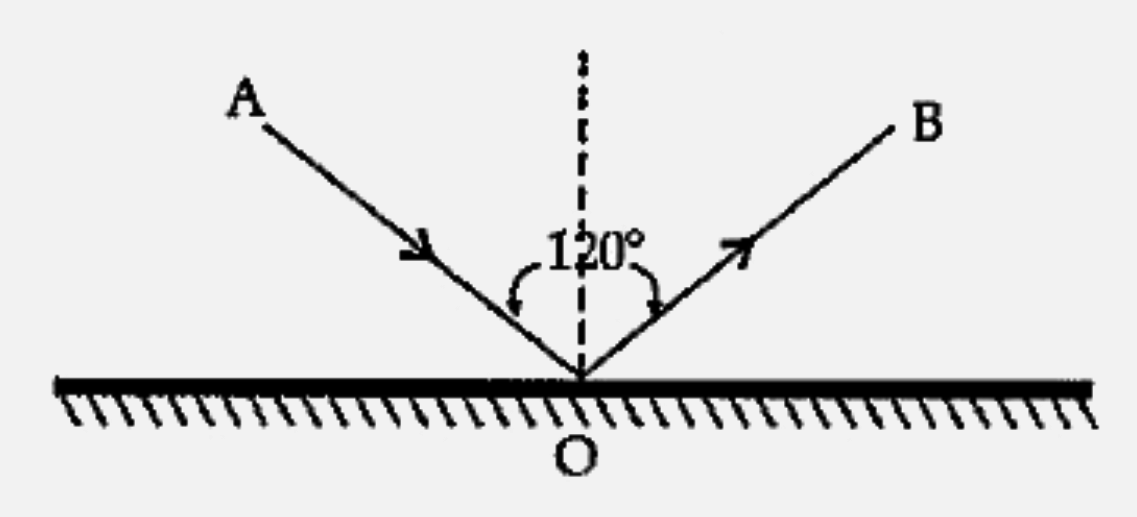Draw a diagram showing the reflection of a light ray from a plane mirror. Label on it the incident ray, the reflected ray, the normal, the angle of incidence i and the angle of reflection r.
To draw a diagram showing the reflection of a light ray from a plane mirror and label the necessary components, follow these steps:
1. Draw the Plane Mirror: Start by drawing a straight horizontal line to represent the plane mirror. Label it as "Plane Mirror".
2. Draw the Normal Line: From the center of the mirror, draw a dashed vertical line perpendicular to the mirror's surface. This line represents the "Normal". Label this line as "Normal".
3. Draw the Incident Ray: From the left side of the mirror, draw a straight line approaching the mirror at an angle. This line represents the "Incident Ray". Label this line as "Incident Ray".
4. Mark the Angle of Incidence: Identify the angle formed between the incident ray and the normal line. Label this angle as "i" for the angle of incidence.
5. Draw the Reflected Ray: From the point where the incident ray meets the mirror, draw another straight line going away from the mirror at the same angle as the incident ray but on the opposite side of the normal. This line represents the "Reflected Ray". Label this line as "Reflected Ray".
6. Mark the Angle of Reflection: Identify the angle formed between the reflected ray and the normal line. Label this angle as "r" for the angle of reflection.
Final Diagram:
- You should have a horizontal line for the mirror, a vertical dashed line for the normal, an incoming line for the incident ray, and an outgoing line for the reflected ray. The angles of incidence and reflection should be clearly marked.
- You should have a horizontal line for the mirror, a vertical dashed line for the normal, an incoming line for the incident ray, and an outgoing line for the reflected ray. The angles of incidence and reflection should be clearly marked.
Topper's Solved these Questions
- LIGHT ENERGYBOOK - ICSECHAPTER - LIGHT ENERGYEXERCISE - QUESTIONS
6 Videos
- LIGHT ENERGYBOOK - ICSECHAPTER - LIGHT ENERGYEXERCISE - QUESTIONS (Write T for True and F for False)
5 Videos
- LIGHT ENERGYBOOK - ICSECHAPTER - LIGHT ENERGYEXERCISE - TEST YOURSELF (SELECT THE CORRECT)
10 Videos
- HEATBOOK - ICSECHAPTER - HEATEXERCISE - EXERCISE (PICTURE)
10 Videos
- MODEL TEST PAPER 1BOOK - ICSECHAPTER - MODEL TEST PAPER 1EXERCISE - SECTION II
43 Videos
Similar Questions
Draw a diagram to show the reflection of a ray of light by a plane mirror. In the diagram, label the incident ray, the reflected ray, the normal, the angle of incidence and the angle of reflection.
View SolutionDraw a diagram to show the reflection of a light ray incident normally on a plane mirror.
View Solution
Knowledge Check
The angle of incidence on a plane mirror is 30∘ . The angle between the incident ray and the reflected ray is
A30∘B15∘C60∘D90∘
When a light ray is reflected from a wall, the angle of incidence is not equal to the angle of reflection.
View SolutionThe incident ray, the reflected ray and the normal lie............
View SolutionDraw diagrams to show the refraction of light from (i) air to glass, and (ii) glass to air. In each diagram, label the incident ray, refracted ray, the angle of incidence (i) and the angle of refraction (r).
View SolutionThe diagram below shows a light ray striking and reflecting from a plane mirror AO is the incident ray and OB the reflected ray. The angle between the incident ray and the reflected ray is 120∘.

What is the value of the angle of reflection?
View SolutionThe diagram below shows a light ray striking and reflecting from a plane mirror AO is the incident ray and OB the reflected ray. The angle between the incident ray and the reflected ray is 120∘.

If two plane mirrors are used and kept facing parallel to each other, how many images are formed if the object is kept in between them?
View SolutionThe diagram below shows a light ray striking and reflecting from a plane mirror AO is the incident ray and OB the reflected ray. The angle between the incident ray and the reflected ray is 120∘.

If the image of an object is formed 5 cm behind the mirror, what is the distance between the image and the object?
View SolutionIn the figure given the angle between incident ray and the reflected ray is 70∘

Find the angle of incidence.
View Solution